Circumplanetary Disk Simulation
Contribution to the 2018 Fulldome Festival Jena
by T. Müller1), E. Bopp1), H. Klahr1), A. Krieger2), and S. Wolf2)
New-born stars are surrounded by a disk of gas, ice and dust. This disk forms the building material for planetary systems. Via collisional growth of the grains and gravitational accumulation of bigger and bigger objects planetary embryos are formed that attract the surrounding gas leading to the formation of a circumplanetary disk and envelope. Here, we give a visual impression how astrophysical simulations reveal the dynamics of such systems.
The full-dome video resulted from a cooperation between the Max Planck Institute for Astronomy1) Heidelberg and the Institute for Theoretical Physics and Astrophysics2) of the Christian-Albrechts-University of Kiel.
Award: Fulldome Festival Finalist 2018
Storyboard
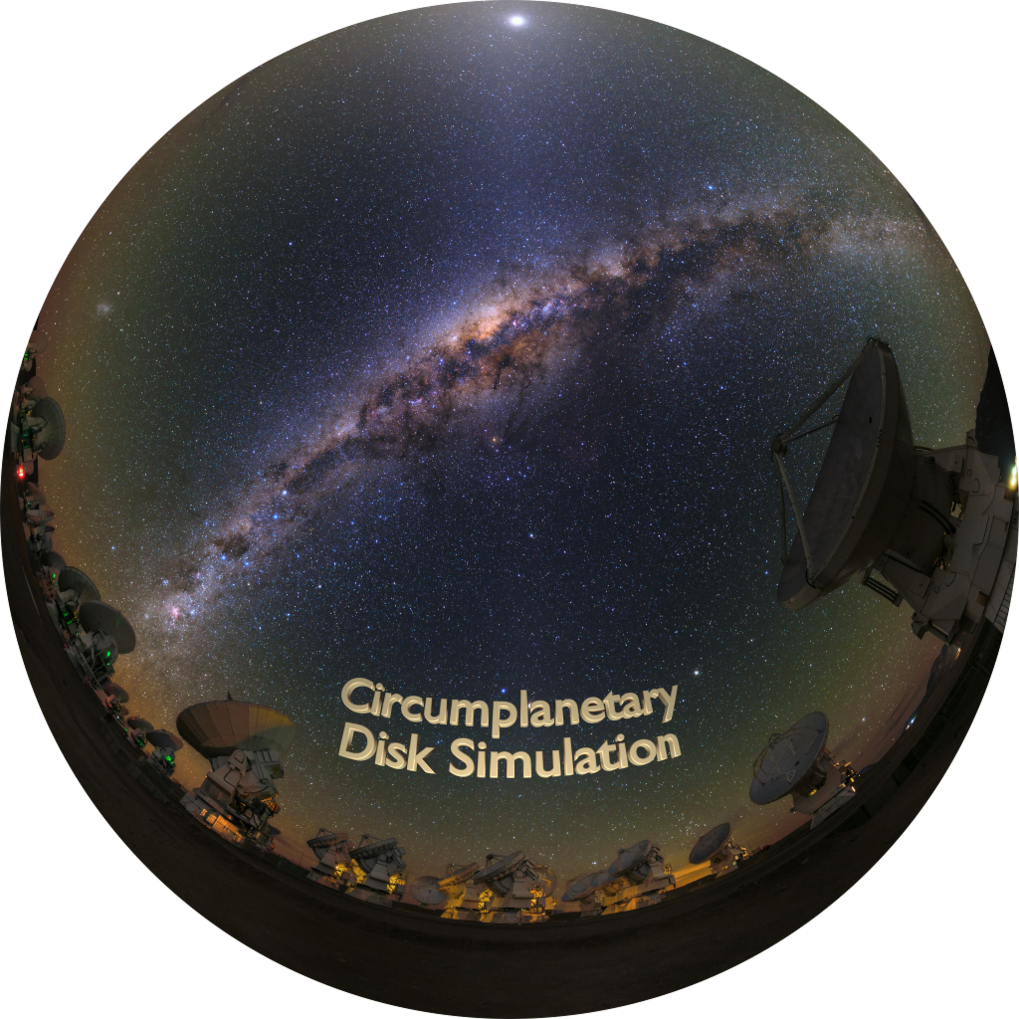 |
Introduction
Planets are born in disks made of dust and gas which surround young stars. Our own solar system was born this way. Astromoners have been able to observe such disks using infrared radiation and radio waves. |
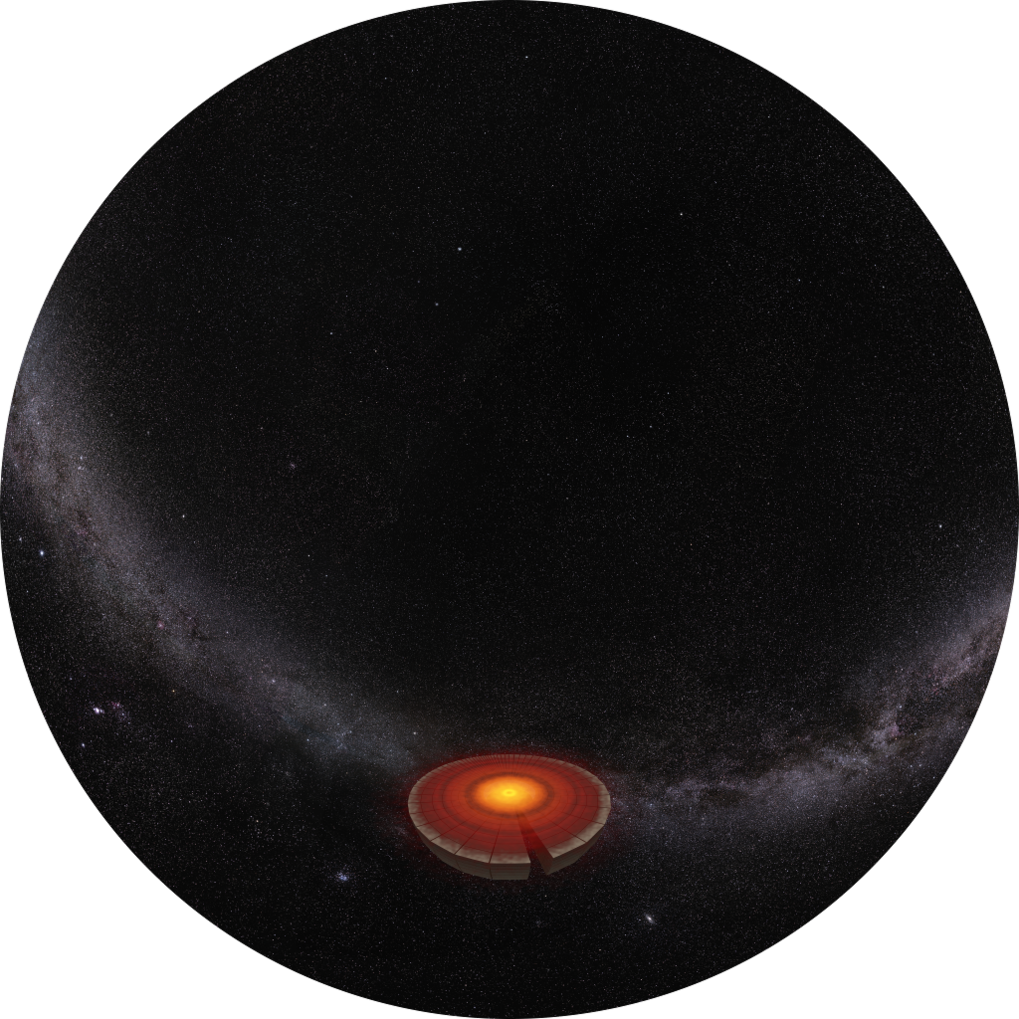 |
Simulation domain
In order to simulate such a disk astronomers partition space into separate cells. Using powerfull computers they calculate how matter moves from one cell to another and how the central star's radiation affects the properties of the swirling gas and dust. |
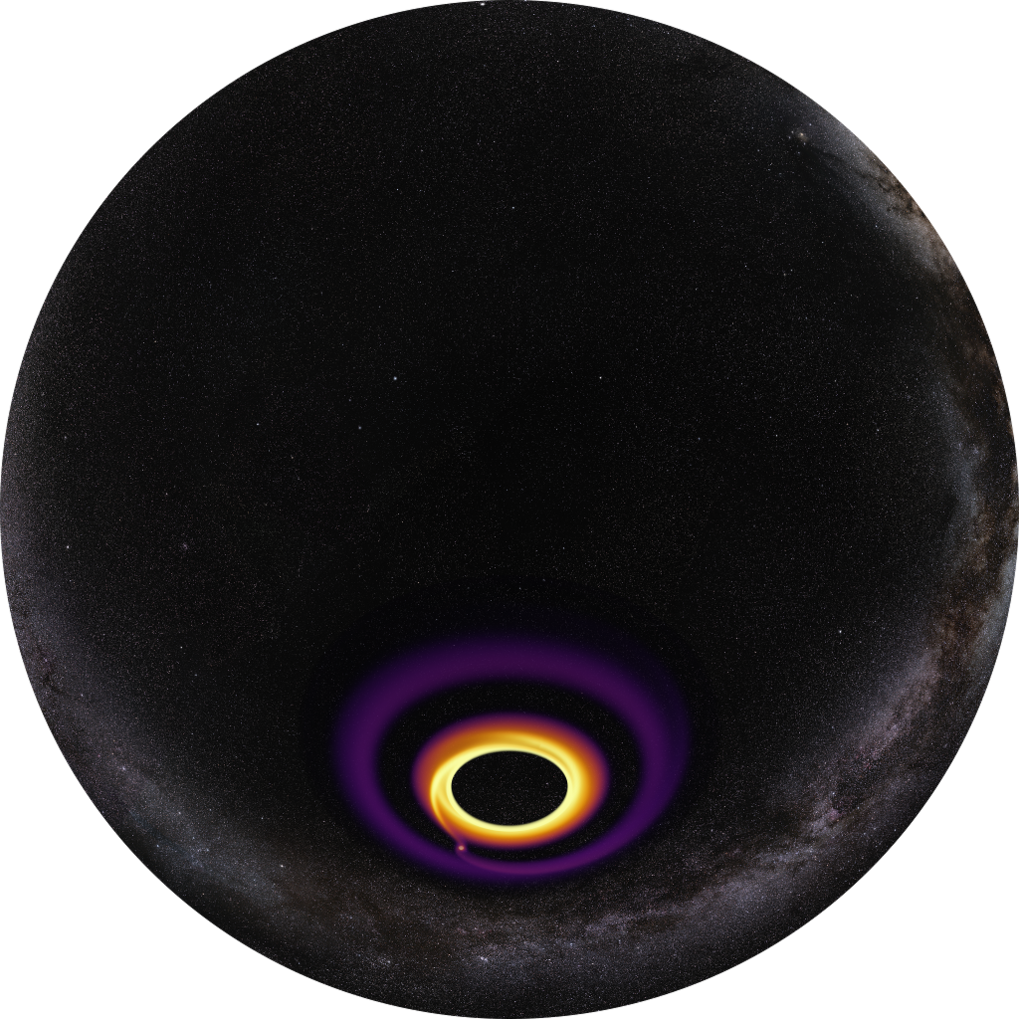 |
Volume visualization
This snapshot from a simulation shows the density of the gas and dust. Can you see the bright little spot? That's a planet forming. The young planet has collected all of the gas and dust along its orbit creating a ring structure. It has also disturbed gas and dust so as to form a characteristic spiral pattern. |
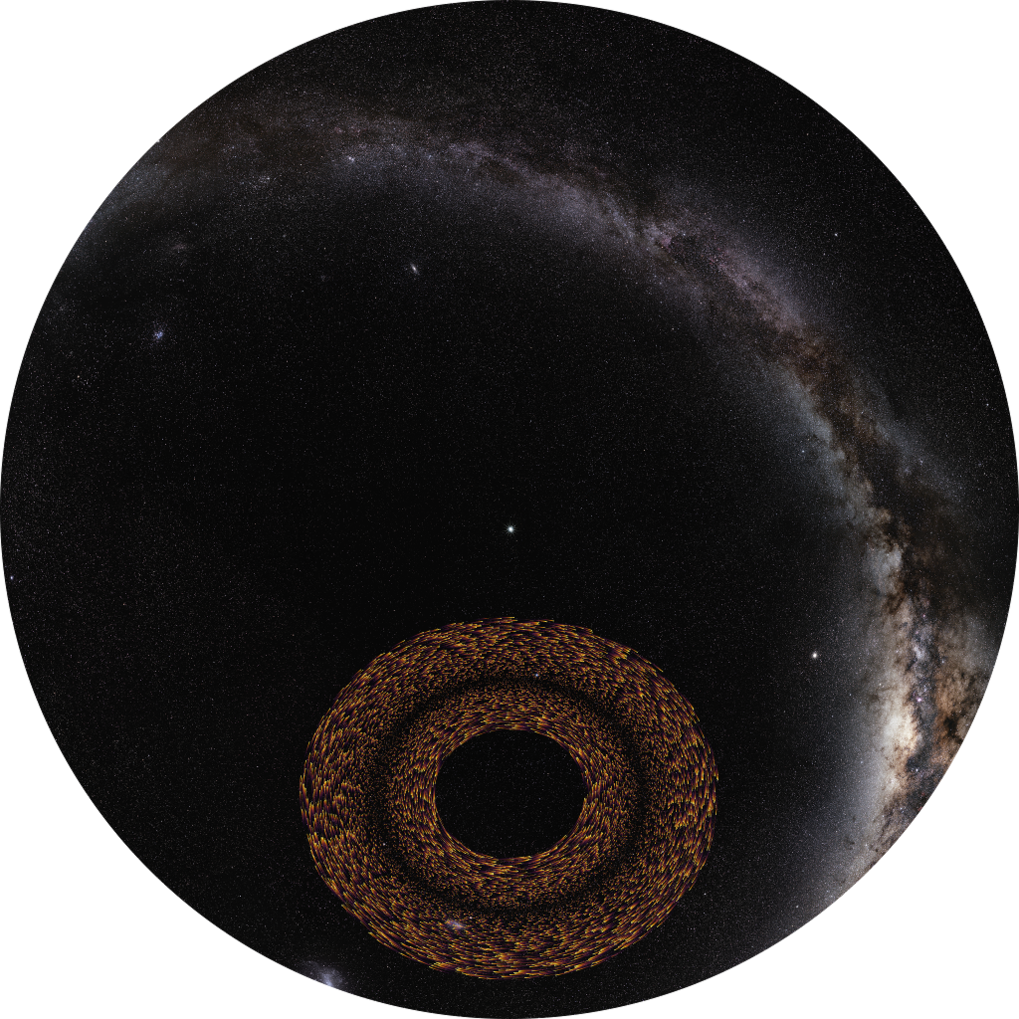 |
Particle trajectories (global)
This visualization shows how matter is moving within the disk orbiting the young star at different speeds. |
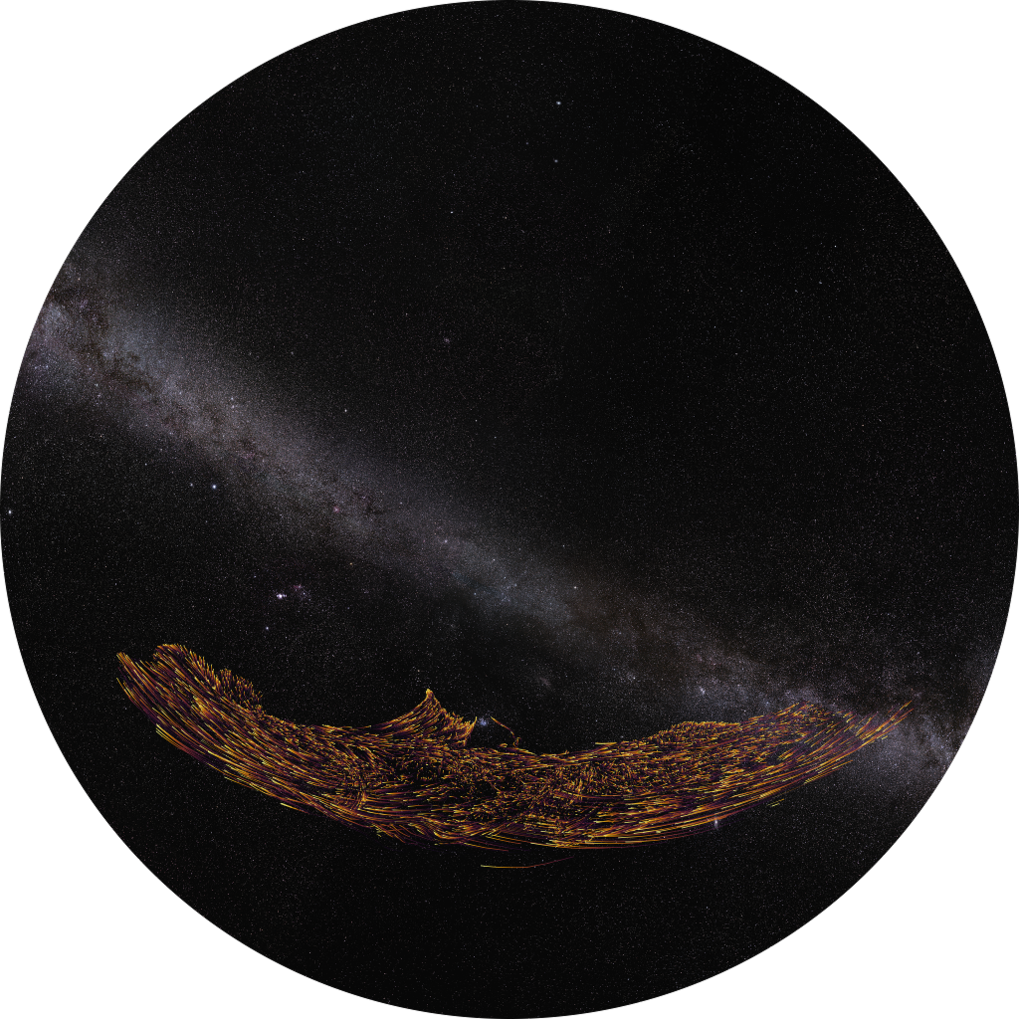 |
Particle trajectories (local)
Here is a smaller region around the young newly born planet. The planet is disturbing the motion of matter in its direct neighborhood creating a swirling pattern and pulling ever more gas and dust onto itself. |
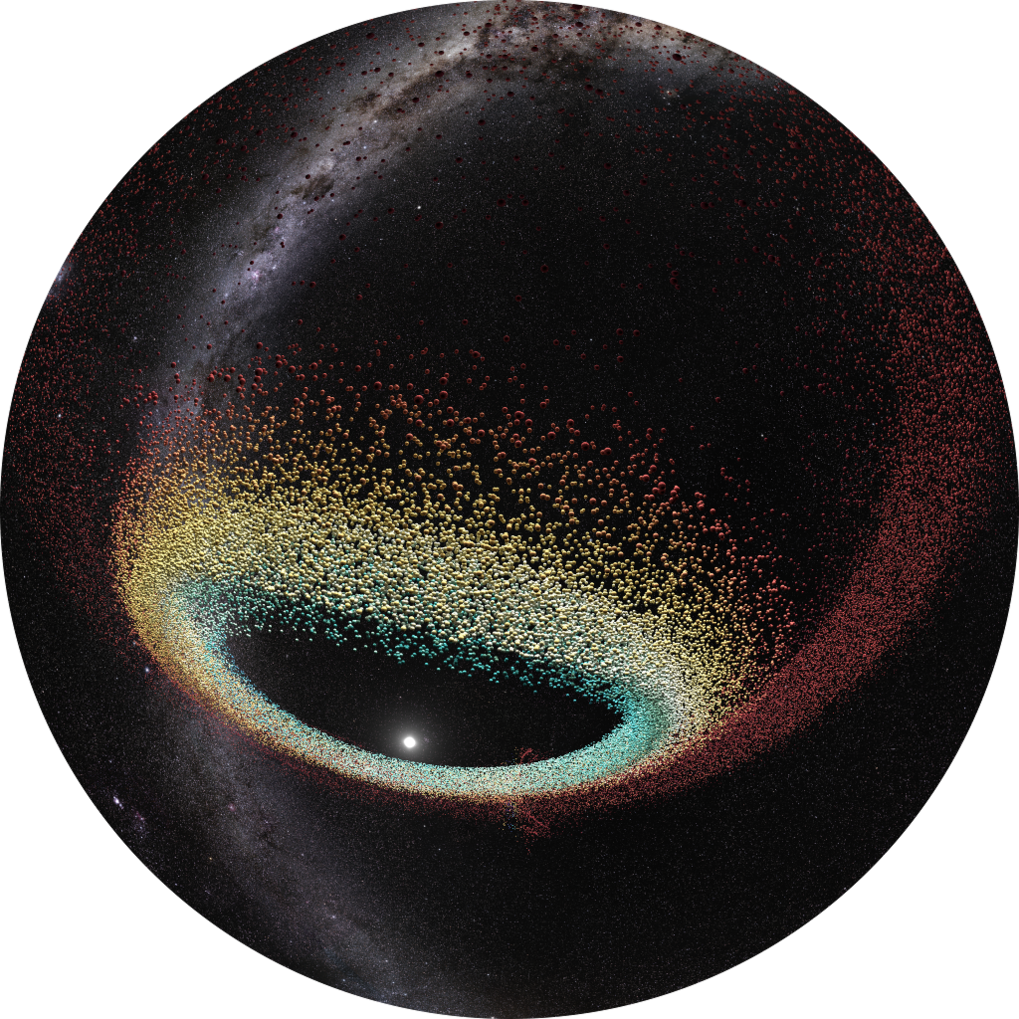 |
Particles
In this next visualization we represent the gas and dust by small particles and show their motion within the disk. Simulations like these promise answers to some of the most fundamental questions about our cosmic neighborhood. How has our own solar system come into being? What is the origin of our home planet - the Earth? |
Text: M. Pössel, Speaker: V. Carpenter






